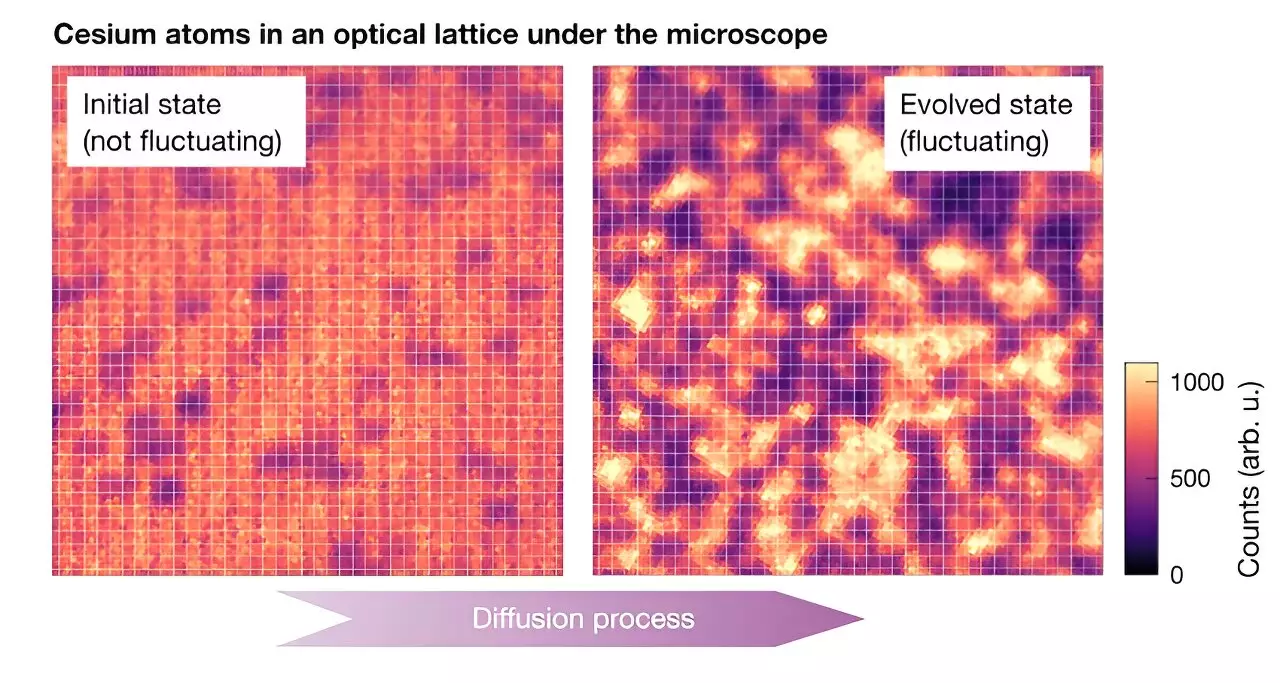The study of quantum systems has long captivated physicists given their intricate behaviors and the challenges they present for accurate modeling. A recent investigation by researchers from Ludwig-Maximilians-Universität, the Max Planck Institute for Quantum Optics, the Munich Center for Quantum Science and Technology, and the University of Massachusetts sheds new light on how fluctuations in large quantum systems can be understood through the concept of fluctuating hydrodynamics (FHD). Their groundbreaking work demonstrates a significant step forward in bridging the gap between classical and quantum physics, particularly in the area of chaotic quantum systems.
Quantum systems, marked by their complexity and the counterintuitive nature of quantum mechanics, often present formidable challenges for simulation. Julian Wienand, one of the co-authors of the research, aptly illustrates this dilemma: while theoretically one could track the movement of each individual particle, the sheer number of particles involved renders this approach impractical with current computational tools. Traditional simulations may falter due to processing limitations, and hence, researchers are driven to explore more efficient frameworks to approximate these diverse particle interactions.
This need leads naturally to the application of hydrodynamics. By leveraging the principles of hydrodynamics, scientists can simplify the complexity inherent in quantum many-body systems. The understanding is that in chaotic conditions, particles naturally gravitate toward a state of local thermal equilibrium. Consequently, rather than treating each particle individually, researchers can conceptualize the system as a continuous density field, governed by simpler equations.
Introducing Fluctuating Hydrodynamics
Fluctuating hydrodynamics extends classical hydrodynamics by integrating thermal fluctuations into its framework, allowing for a more holistic representation of particle interactions. The essence of FHD lies in treating fluctuations as random noise superimposed on the underlying flow of particles, effectively capturing the chaotic nature of quantum systems. This novel approach offers a macroscopic perspective on complex quantum behaviors, particularly through the lens of specific parameters like diffusion constants.
The significance of FHD is highlighted in its potential applicability to chaotic quantum systems—a realm traditionally perceived to deviate significantly from classical analogs due to phenomena like entanglement and superposition. Wienand articulates the transformative nature of this approach, suggesting that the established relationships in classical systems may manifest similarly, albeit simplified, in their quantum counterparts.
The researchers employed a 133Cs quantum gas microscope to conduct large-scale simulations, allowing them to meticulously observe ultracold cesium atoms arranged in an optical lattice. This high-resolution imaging technique enables the precise measurement of fluctuations and other statistical properties within the system, which are essential for validating theoretical predictions.
Upon inducing a sudden change in the depth of the lattice, the team monitored the resulting diffusion processes and thermalization of the ultracold atoms. The ability to track fluctuations over time was pivotal, providing a direct comparison with theoretical predictions made using the FHD framework. Their findings confirm that the qualitative and quantitative aspects of the system indeed correlate well with FHD, offering much-needed validation for this theoretical approach in chaotic quantum scenarios.
Perhaps the most notable aspect of this research is its implications for future quantum physics explorations. The idea that a classical description suffices for understanding a quantum system’s macroscopic behavior is both revolutionary and inviting. This has the potential to reshape our understanding of quantum dynamics, suggesting pathways to clarify seemingly complex phenomena observed in many-body quantum systems.
Moreover, the researchers emphasize the intriguing relationship between equilibrium and out-of-equilibrium conditions established by FHD. The discovery that the diffusion constant, an equilibrium property, can inform real-time measurements of out-of-equilibrium quantum systems underscores the versatility of FHD.
As Wienand and his colleagues further probe the boundaries of this research, they aim to tackle pressing questions that lie ahead. These inquiries revolve around the behavior of fluctuations in non-thermalizing systems and the exploration of higher statistical moments that could illuminate the complex tapestry of quantum dynamics. Their commitment to refining the FHD framework with the potential for incorporating intricate observables suggests that the journey into quantum behavior is far from over.
The synthesis of fluctuating hydrodynamics with quantum physics presented by these researchers paves the way for a deeper understanding of chaotic systems. By showcasing how traditional paradigms can transcend into the quantum domain, this pioneering study highlights the blending of classical theories with quantum inquiries, offering a hopeful glimpse into the future of quantum research.


Leave a Reply